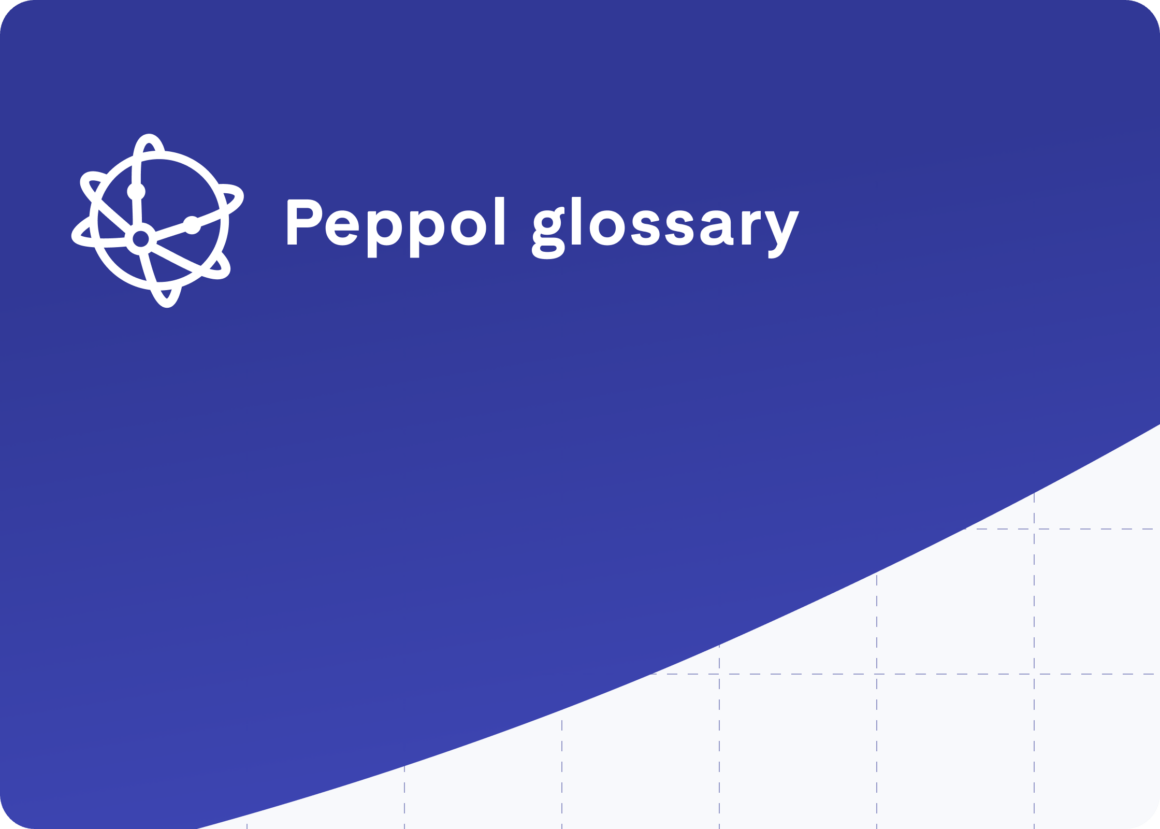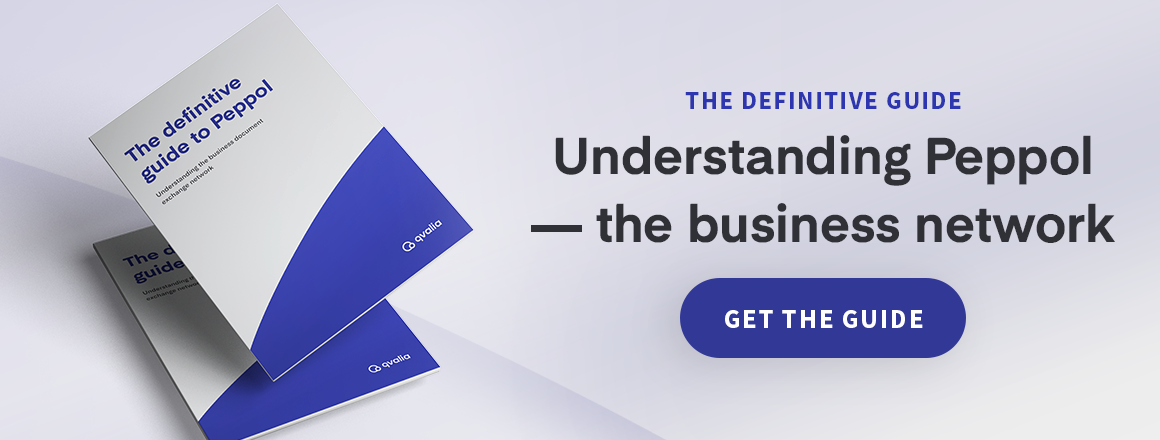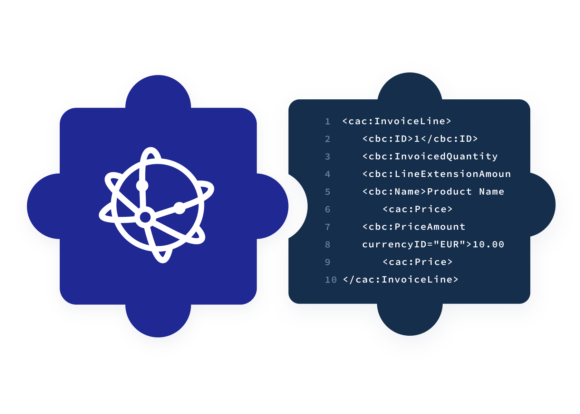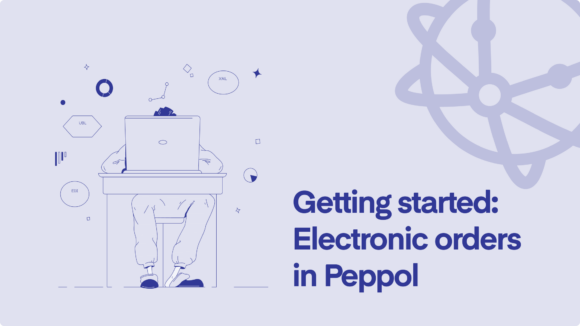
Given its specialized terminology, navigating the world of B2B networks and the digital exchange of business messages can be intricate. Understanding this framework becomes paramount with its evolving significance, especially with the growing adoption of the international and open Peppol network.
Here’s the essential A-Z glossary on Peppol with key terminology and concepts.
Access Point
A gateway through which companies connect to the Peppol network, that is hosted by a Peppol Service Provider. It ensures the secure and standardized transmission of documents between trading partners. Access points are often third-party providers that allow organizations to connect to the Peppol network. Once connected, users can send and receive documents to any other Peppol user across the network. See also Peppol Service Provider.
Learn more about Qvalia’s Peppol Access Point.
B2B
When referring to B2B (Business to Business), it denotes an external message exchange between two distinct entities. These entities do not have a direct linkage through a unified network, such as subsidiaries or shared systems and/or operators. Typically, B2B signifies that data is transmitted online, although it may still employ VPNs, shared certificates, etc.
BIS (Business Interoperability Specifications)
Defines the business processes and associated transactional standards within the Peppol network.
Business message standards
Messages can be described in terms of their type or syntax. Sometimes, we refer to established standards for messages. For instance, Qvalia employs the Peppol BIS Billing 3.0 standard for invoices and credit notes. We utilize the Peppol BIS 3 standards as the foundational format for other message types. Additionally, we support several other standard Integration formats, and we can customize transformations to accommodate clients who may not be versed in the Peppol BIS formats. For B2B formats, we natively support various types, with custom configurations available.
Business message syntax
Two primary syntaxes are in widespread use: XML and JSON. Most systems, like ERPs, utilize XML, while web interfaces and APIs often rely on JSON. Through our API, users can send or receive messages in the Peppol BIS format, either as original Peppol XML or its JSON representation.
E-invoicing
The process of sending invoices electronically rather than via PDF image files or on paper. Peppol standardizes this process, making cross-border e-invoicing more efficient.
eDelivery network
The infrastructure that ensures secure and standardized document exchange between Peppol participants. This is facilitated by the Access Points.
EHF (Elektronisk handelsformat)
Elektronisk Handelsformat, EHF, is Norway’s national e-invoice format. It follows the Peppol specifications completely and uses the network’s infrastructure for exchange.
Read more about EHF.
eProcurement
Electronic procurement processes that businesses or governments use to purchase goods, services, or works.
Exchange
While terms like EDI, VAN, and operator might be used in discussions about message exchanges, Qvalia exclusively uses the term “B2B” for external exchanges in technical specifications. A message exchange between two parties, whether B2B or an integration, consists of the Protocol and the Data (the message content). The Protocol serves as the transporter of the message, whereas the message encapsulates the data to be transferred.
Integrations
Integration with an access point enables business message exchange on the Peppol network using systems such as ERP. See our developer tools.
OpenPeppol
The international non-profit association responsible for developing and maintaining the Peppol specifications. OpenPeppol official website.
Peppol Authority
National bodies responsible for governing and coordinating Peppol activities in their respective countries.
Peppol BIS
Stands for “Business Interoperability Specifications.” It defines the set standards and practices for electronic business messages to ensure smooth and consistent exchanges within the network.
Peppol directory
A searchable index that lists companies and their respective Peppol IDs, simplifying the process of finding business partners within the network. Search the Peppol directory.
Peppol document types
Specific formats of electronic documents standardized for exchange within the Peppol network, like invoices or purchase orders. Here is a complete list of business message types in Peppol.
Peppol governance framework
Set of agreements, internal regulations (policies), and operational procedures governing and operationalizing the Peppol Interoperability Framework. The Peppol Governance Framework is rooted in and must comply with the OpenPeppol AISBL Statutes.
Peppol network
A business network and set of standards and specifications that enable the exchange of electronic business messages (documents) over the Peppol network, such as invoices, purchase orders, and despatches. Previously an acronym for “Pan-European Public Procurement Online.”
Peppol ID
A unique address identifies receivers and allows companies and organizations to receive business messages across the Peppol network. Find Peppol-IDs.
Peppol interoperability framework
Collection of artifacts, including agreements, policies, procedures, and technical specifications, collectively ensuring interoperability within the Peppol Network. This encompasses the Peppol Architectural Framework and the Peppol Governance Framework. They adapt based on the change management stipulations outlined in the Internal Regulations, Operational Procedures. Read more about Peppol interoperability framework.
Interoperability refers to the ability of different information systems, devices, applications, or networks to work together and exchange information effectively, accurately, and seamlessly. The main goal of interoperability is to facilitate the integrated and cooperative use of different systems without requiring any special effort from the user.
Peppol participant
An entity (typically a business or government body) that is registered and can send or receive documents over the Peppol network.
Peppol policy for use
Several documents outline the terms and conditions for using the Peppol network — Internal Regulations on the Use of the Peppol Network, Operational Procedures, and Service Provider Agreement. The Core Invoice Usage Specification (CIUS) specifies detailed guidance and business rules related to the actual implementation and use for seller, issuers of e-invoices. See also Peppol governance documentation.
Peppol Service Provider
A Peppol Service Provider is authorized to provide Peppol Services based on the Peppol Interoperability Framework in the Peppol Service Domains that the Service Provider operates. This means that each Service Provider is certified for one or more Peppol Services, such as Access Point, Service Metadata Publisher, etc. Once a Service Provider is certified by a Peppol Authority, the Service Provider will receive a set of Peppol certificates needed to communicate in the Peppol network. See also Access Point.
Post-Award
Mandatory technical aspects, processes, and message types in the Peppol network for all service providers/access points. Ensures interoperability of core message types.
More information about Post-Award.
Pre-Award
Refers to technical aspects, processes, and message types under development in Peppol. It is voluntary for Peppol service providers/access points to participate in initiatives and non-mandatory to receive, for example, message types within Pre-Award.
More information about Pre-Award.
Protocols
A transfer protocol is a set of rules or conventions governing data exchange between devices over a network. These protocols define how devices on a network format and transmit messages, ensuring that the sender and receiver interpret the data consistently and correctly. By adhering to specific transfer protocols, systems can communicate with each other effectively, even if they have different internal architectures.
One of the most commonly known transfer protocols is the “Hypertext Transfer Protocol” (HTTP), used by web browsers to access websites. Similarly, “File Transfer Protocol” (FTP) is designed to transfer files between systems. There are many other transfer protocols, each suited for specific types of communication and data transfer tasks.
While Qvalia recognizes several transfer protocols, we expand the technical definition of “protocol” beyond HTTP and SFTP to encompass API, Peppol, and local/national protocols, even though they all operate over the HTTP protocol. It’s crucial to remember that the protocol functions merely as a conduit. The actual “protocol” typically incorporates security features like passwords, certificates, etc., ensuring a secure connection and transfer.
SML (Service Metadata Locator)
Part of the Peppol directory service, it helps locate the correct Service Metadata Publisher for a given participant. See also SMP (Service Metadata Publisher).
SMP (Service Metadata Publisher)
A directory service that allows an Access Point to discover where and how to send a document to a recipient. These play an integral role in the network, enabling service providers to discover each other’s capabilities and the kinds of documents they can exchange. See also SML (Service Metadata Locator).
UBL (Universal Business Language)
The XML-based syntax used for many Peppol document types.
VAN (Value Added Network)
A VAN is broadly utilized to denote the employment of an intermediary, also known as an operator, that facilitates message exchange. When using a VAN service, the primary Integration is usually with the VAN, which manages the B2B aspects. This can be analogized to a postal system where messages are handed over for subsequent delivery. Typically, a VAN exchange involves four parties: the sender, the sending VAN service, the receiving VAN service, and the receiver.
ZIP
Attaching ZIP or other compressed files and distributing them with business messages in the Peppol network is impossible.



